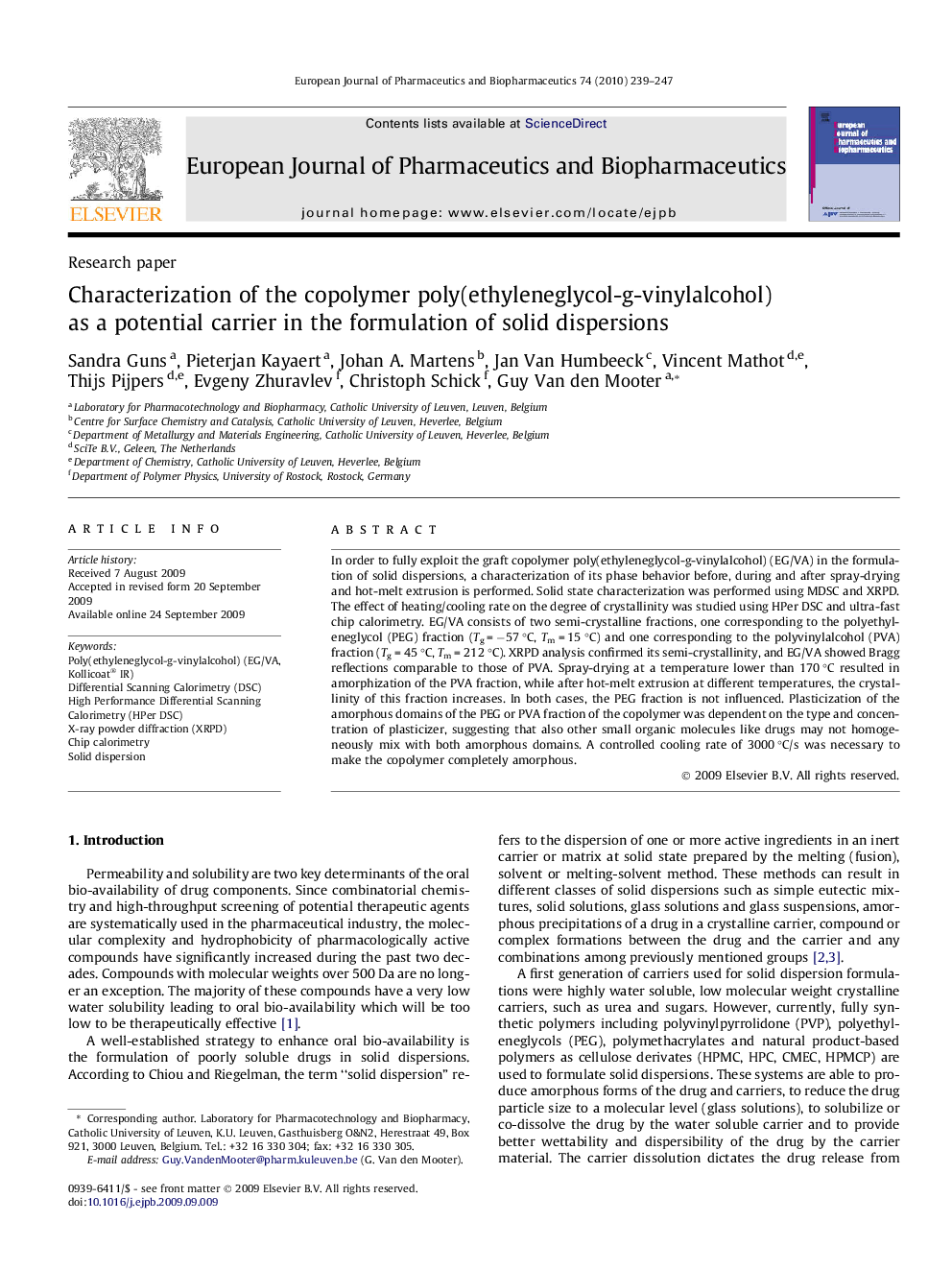| Article ID | Journal | Published Year | Pages | File Type |
|---|---|---|---|---|
| 2085553 | European Journal of Pharmaceutics and Biopharmaceutics | 2010 | 9 Pages |
In order to fully exploit the graft copolymer poly(ethyleneglycol-g-vinylalcohol) (EG/VA) in the formulation of solid dispersions, a characterization of its phase behavior before, during and after spray-drying and hot-melt extrusion is performed. Solid state characterization was performed using MDSC and XRPD. The effect of heating/cooling rate on the degree of crystallinity was studied using HPer DSC and ultra-fast chip calorimetry. EG/VA consists of two semi-crystalline fractions, one corresponding to the polyethyleneglycol (PEG) fraction (Tg = −57 °C, Tm = 15 °C) and one corresponding to the polyvinylalcohol (PVA) fraction (Tg = 45 °C, Tm = 212 °C). XRPD analysis confirmed its semi-crystallinity, and EG/VA showed Bragg reflections comparable to those of PVA. Spray-drying at a temperature lower than 170 °C resulted in amorphization of the PVA fraction, while after hot-melt extrusion at different temperatures, the crystallinity of this fraction increases. In both cases, the PEG fraction is not influenced. Plasticization of the amorphous domains of the PEG or PVA fraction of the copolymer was dependent on the type and concentration of plasticizer, suggesting that also other small organic molecules like drugs may not homogeneously mix with both amorphous domains. A controlled cooling rate of 3000 °C/s was necessary to make the copolymer completely amorphous.
